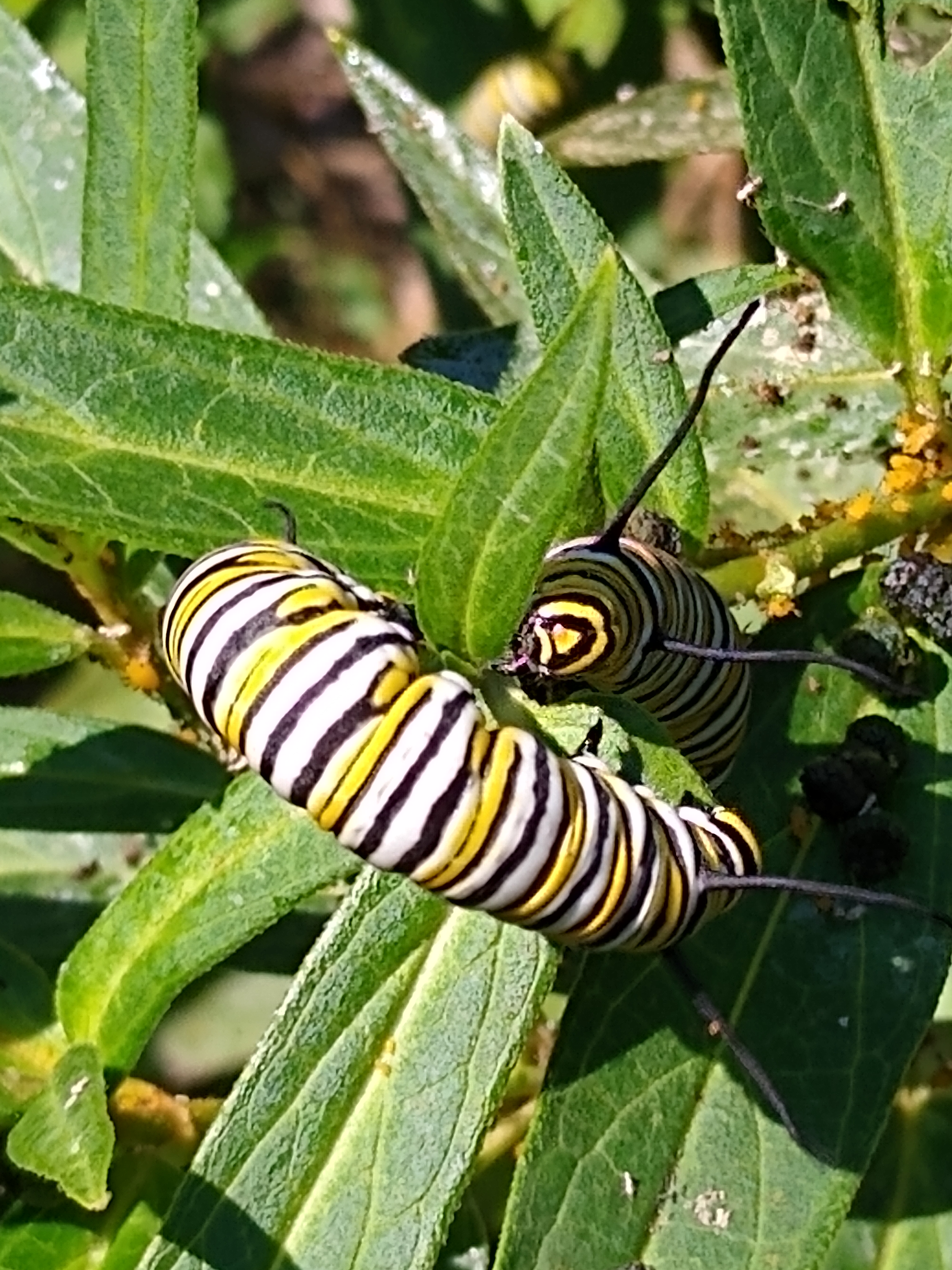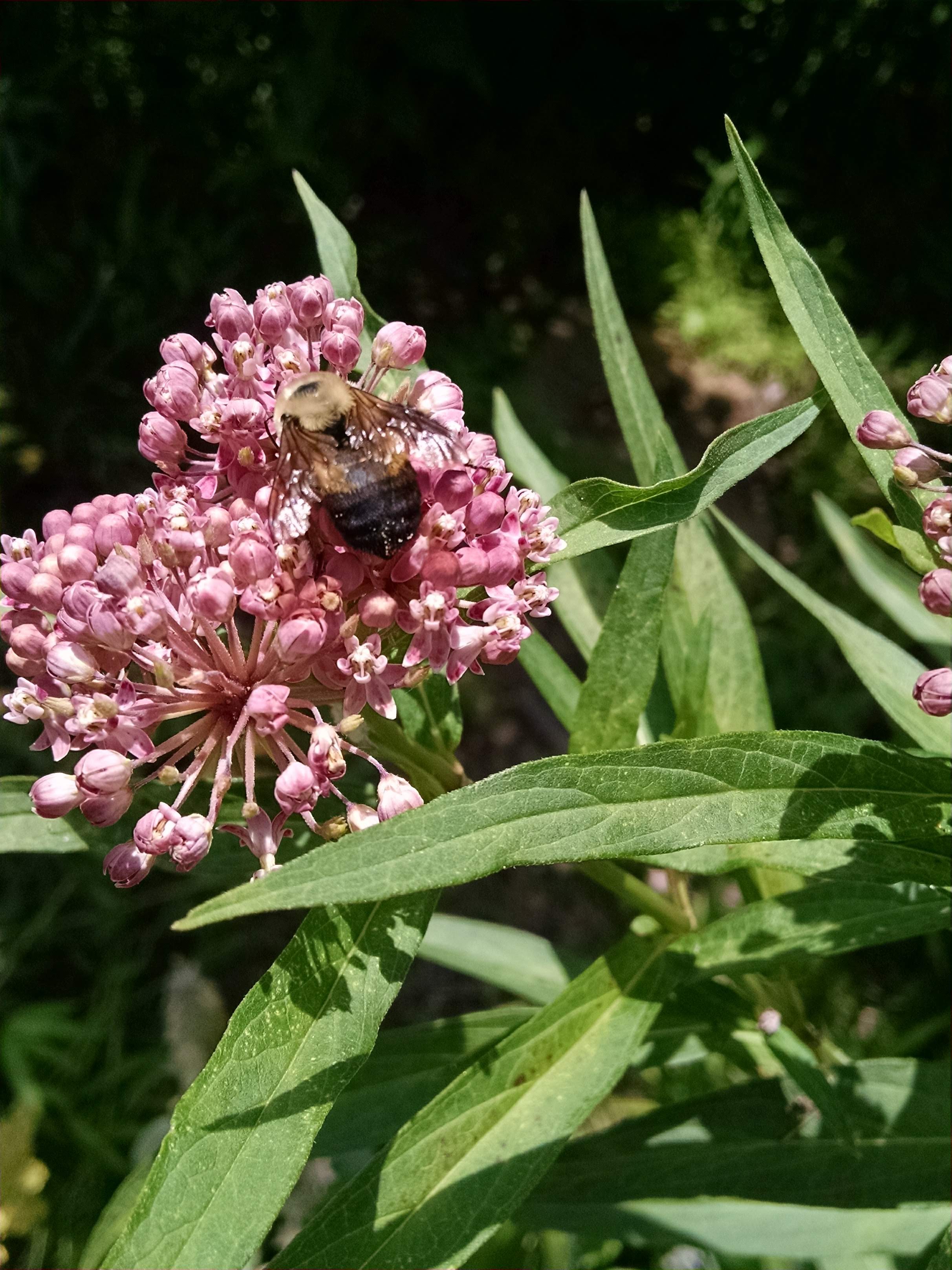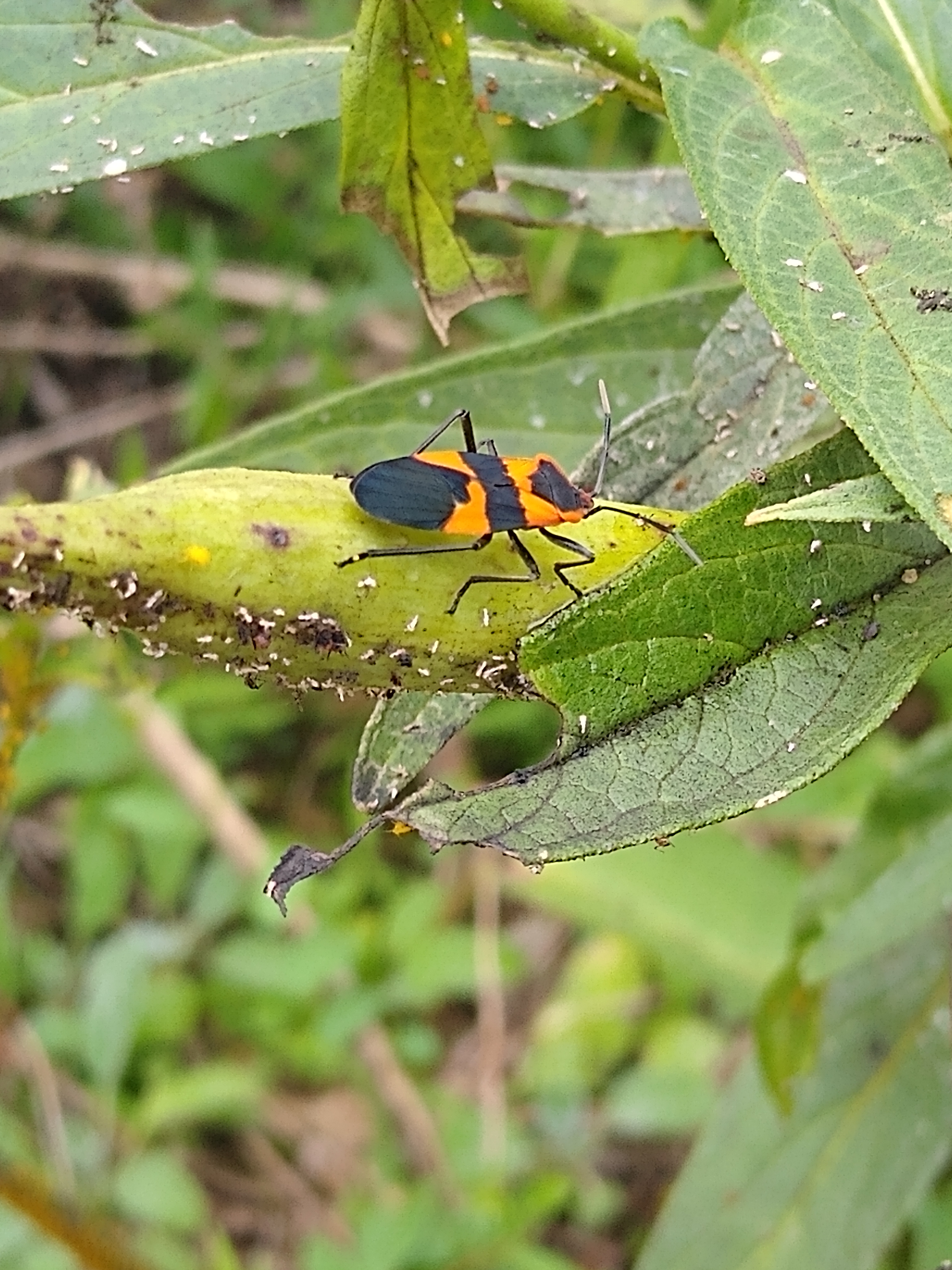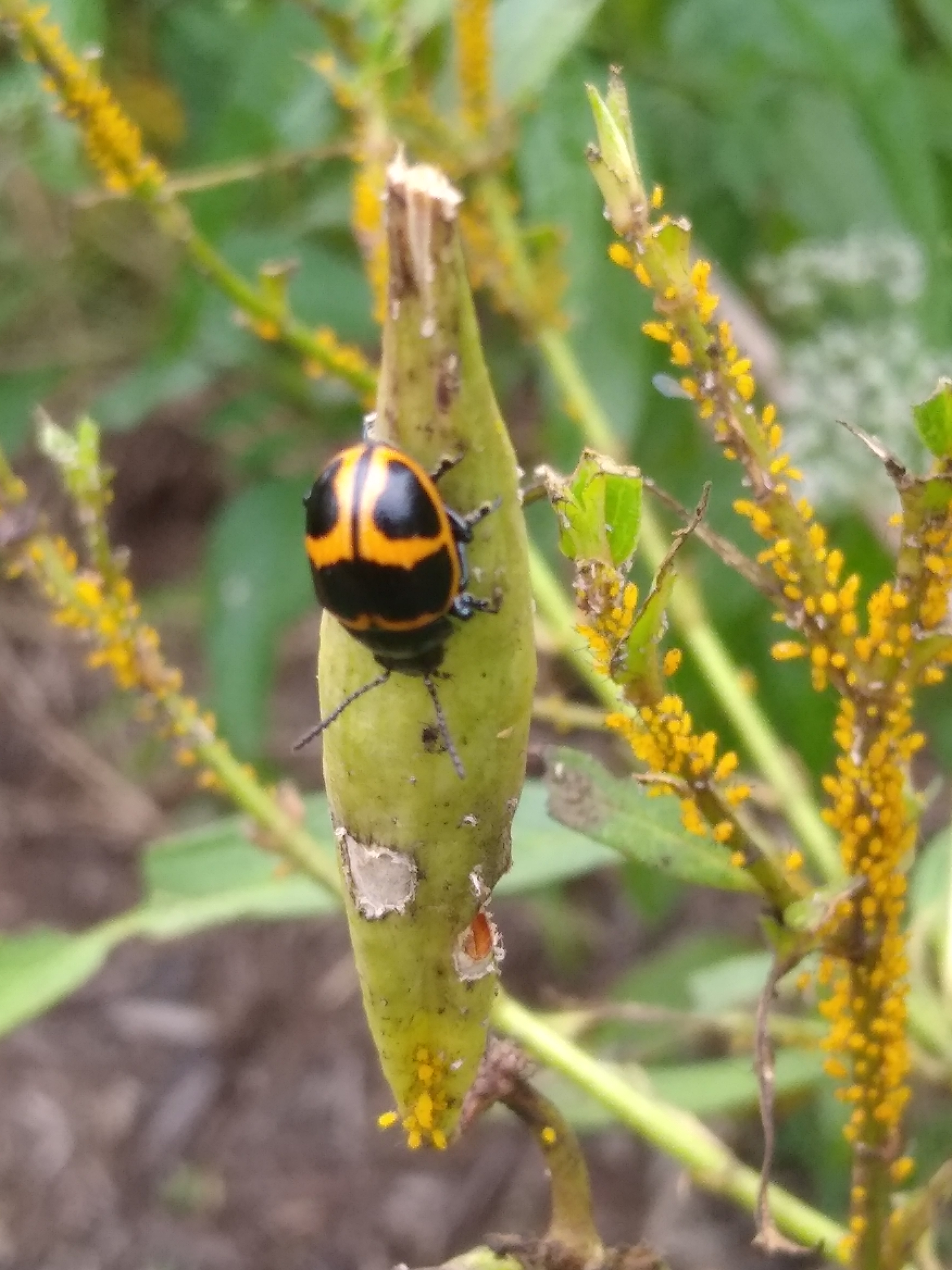Field Notes: Milkweed Magic
September 18, 2020 11:37 am

By Ellen Powell, DOF Conservation Education Coordinator
For a plant with ‘weed’ in its title, milkweed is a pretty awesome plant. It contains toxins called cardiac glyphosides, which deter feeding by most insects and mammals. Despite this trait, a milkweed plant is a little universe unto itself. In fact, one study documented more than 450 species of insects visiting milkweed in a single midwestern field.
You probably already know about the association between milkweeds and monarchs (Danaus plexippus). The caterpillars of these iconic butterflies feed only on plants in the milkweed genus, Asclepius. As a reward for this boring diet, their bodies retain the toxins produced by the plant. These persist into adulthood, making adult monarchs distasteful to most predators. The butterfly’s black and orange coloring and the caterpillar’s contrasting stripes are nature’s warning to stay away.

But monarchs aren’t the only milkweed lovers in the insect world. Currently, the only milkweed in my garden is a single large specimen of swamp milkweed, Asclepius incarnata. In June, its pink blooms were abuzz and aflutter with many different insects. (The nectar isn’t toxic and attracts all sorts of nectar feeders.) After the blooms faded, I ignored my plant for a month or two. When I examined it in September, I found, in addition to seven hungry monarch caterpillars, a few other interesting insects that feed on milkweed.

Large milkweed bugs (Oncopeltus fasciatus) are “true bugs” of the order Hemiptera. They feed mainly on milkweed seeds, probing through the pods with their long piercing mouthparts to suck juices from the seeds within. Like monarchs, milkweed bugs accumulate toxins in their bodies, and like them, they sport a bold color pattern. This is an example of Müllerian mimicry, in which two or more species look alike and are both noxious to predators.

Milkweed leaf beetles (Labidomera clivicollis) look a bit like very large, chunky ladybugs. Both their larvae and adults feed on milkweed leaves. Unlike monarchs and milkweed bugs, these beetles do not build up toxins from the plants, but they do share the same contrasting colors. This is an example of Batesian mimicry, in which a tasty species mimics one that tastes bad.

My milkweed also attracted yellow aphids this year, seen in the background of the beetle photo. These are most likely oleander aphids (Aphis nerii), an introduced pest that feeds on (you guessed it) oleander in its native Mediterranean habitat.
Fourteen species of milkweed are native to Virginia. Clusters of white, pink, purple, or orange flowers bloom from late spring through late summer, depending on species. In late summer to fall, the seed pods will split to release fluffy seeds that drift away in the wind.
Many Virginia gardeners cultivate milkweeds for their flowers and for their benefit to monarchs. The summer generations of monarchs live only a few weeks, but September’s caterpillars are different. They will transform into the tough, yet lovely, butterflies that will make a 3,000-mile journey to central Mexico, hang out for the winter, and return to the U.S. in spring.
My monarch caterpillars all left the plant to pupate when I was away for a few days. I looked everywhere for their chrysalises, but in my jungle of a garden, I couldn’t find any. Hopefully they’ll all produce strong, healthy monarchs capable of making that long flight.
Monarchs are a species in trouble. Contributing factors include habitat loss on both breeding and overwintering grounds, climate change, and pesticide use. You can help by growing milkweed in your own yard. (Buying plants from a nursery is usually the best option, because milkweed seeds don’t germinate reliably.) When friends ask what that interesting plant is, don’t be afraid to tell them it’s a weed – and a very cool one!
Tags: Insects, Wildflowers, Wildlife
Category: Education
